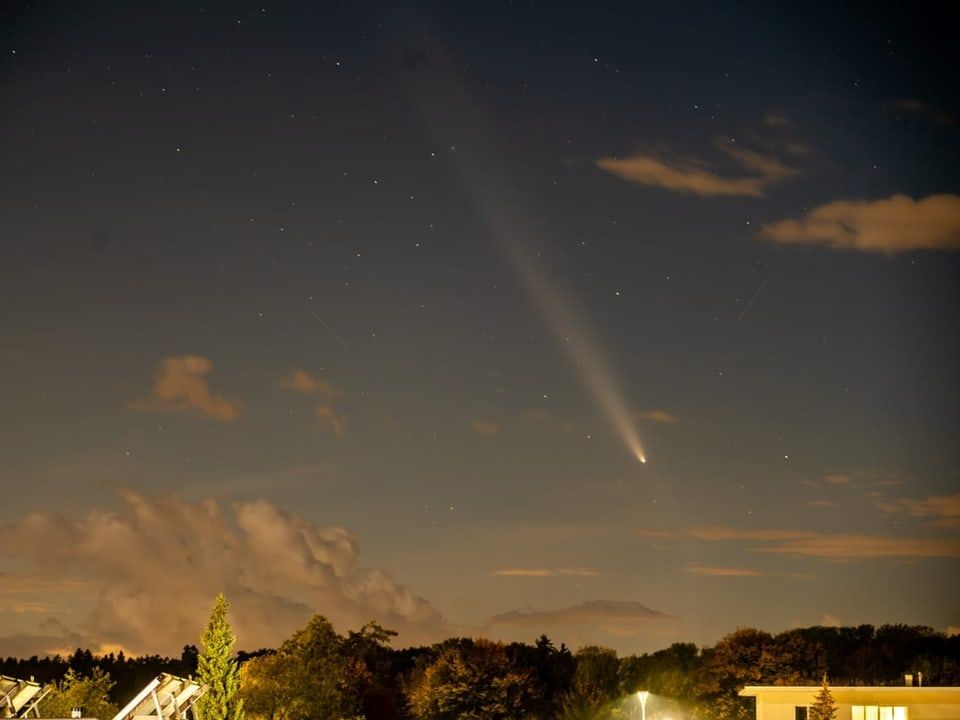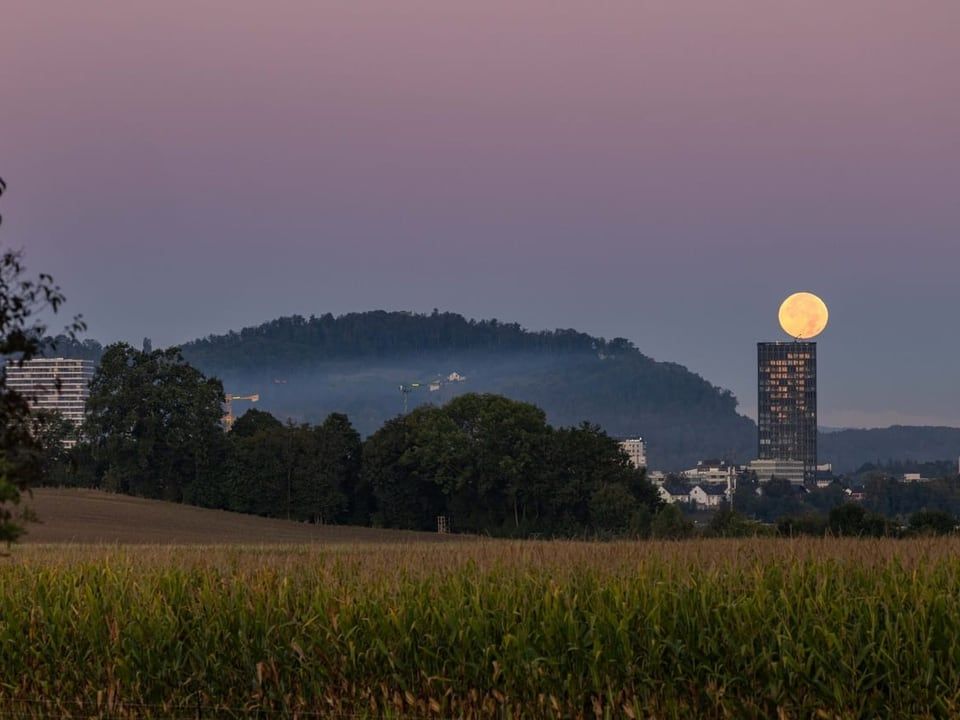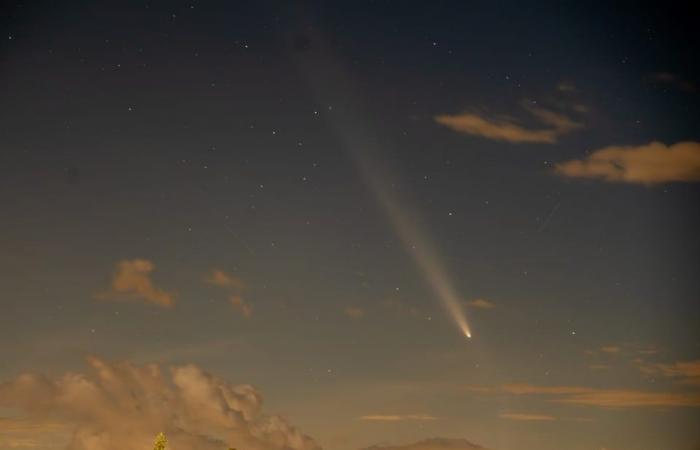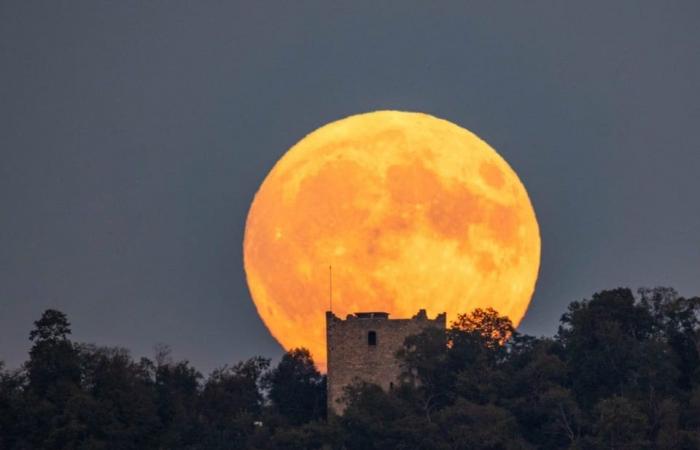Tonight it’s worth looking at the starry sky. Because with the supermoon and the comet Tsuchinshan-ATLAS there is a double celestial spectacle coming up. Our SRF meteorologist Mauro Hermann knows where you can best observe the two celestial bodies and when the chance is greatest.
Mauro Hermann
meteorologist
Open the people box
Personen-Box clappers
Mauro Hermann studied at ETH Zurich and completed his doctorate in atmospheric and climate sciences. He was part of various expeditions on the Greenland Ice Sheet and in the central Arctic. He has been a meteorologist at SRF Meteo since January 2024.
What can you observe in the sky?
On the one hand, there is another supermoon, which rises at around 6:30 p.m. This can be seen all over the world. On the other hand, the comet Tsuchinshan-ATLAS can still be seen in the northern hemisphere, including Switzerland. It is no longer as bright as it was at the beginning of the week, but still appears well above the horizon at around 8 p.m.
Is the weather cooperating?
The chances are best just before dark. The supermoon rises in the east and the comet can be seen in the west. As the night progresses, more and more clouds gather and fog begins to form again in places. Not ideal conditions, but with a bit of luck it should work, especially in the regions from the canton of Schaffhausen via northwestern Switzerland to Lake Geneva.
What do we know about the comet Tsuchinshan Atlas?
As is usual with comets, it is a “dirty snowball”: It consists of frozen water, frozen gases and dust. It is one of the five brightest comets of the last hundred years. Last weekend, at its closest point to Earth, it was about half as far away from us as the Sun. But he is already racing away from us again at incredibly high speed.
1 / 3 The comet Tsuchinshan-ATLAS has been visible in the sky for a few days. (October 14, 2024, Hoher Hirschberg) Patricia Lang

2 / 3 It is one of the five brightest comets of the last hundred years. (October 15, 2024, Romanshorn) Dominik Röthlisberger

3 / 3 The celestial spectacle was observed by several SRF readers and captured with photos. (October 16, 2024, Rüeggisberg) Daniel Baukmann
How does a supermoon form?
The moon’s orbit around the Earth is not circular, but elliptical. That’s why the moon is closer to Earth on some days than others. The difference in distance between its closest and furthest point to Earth is about ten percent. A supermoon is, on the one hand, a full moon and, on the other hand, the moon is particularly close to the Earth. This time it comes a little closer to our planet than 360,000 kilometers. For comparison: around two weeks ago the moon was particularly far away as an empty moon, at a distance of over 405,000 kilometers.
Why does the moon seem so big?
This is not an optical illusion, but actually a visible difference in size. The diameter of the supermoon is optically around 14 percent larger than that of a minimoon (when the full moon is particularly far away from Earth). It is also a third brighter, which further emphasizes the difference in size. When rising and setting just above the horizon, the moon illusion also works. This makes every moon – whether supermoon or not – appear larger.

1 / 3 There was already a supermoon in mid-September. This picture was chosen by SRF users as the most beautiful weather picture of the month. (September 18, 2024, Furka area) Peter Limacher

2 / 3 If the moon is low on the horizon, the so-called lunar illusion occurs. Viewers then place the moon in relation to earthly objects such as buildings or mountains. (September 18, 2024, Füllinsdorf) Peter Wehrli

3 / 3 With a supermoon, not only is the diameter visually larger, but it also shines brighter. (September 17, 2024, Bruderholz) Peter Wehrli
Will there be an impact on Earth?
The supermoon also affects the ebb and flow of tides: the increased gravitational force leads to stronger tides.
SRF Weather App
Open the box
Box zuklappen
Take a look at the SRF Meteo app now and be ready for any weather – fast, reliable, up-to-date. Don’t you have the SRF Meteo app on your smartphone yet? Then download it here.
Install now and get started.












